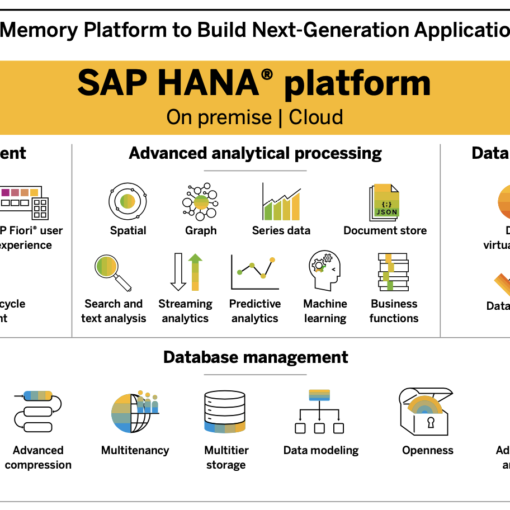1. Introduction
In the bustling world of mobile app development, success isn’t just about crafting a great app; it’s about understanding how users interact with it. Enter the realm of Mobile App Analytics—an invaluable tool for developers seeking to unravel the mysteries of user behavior.
2. Understanding Mobile App Analytics
2.1 Decoding the Metrics Jungle
Mobile App Analytics involves the collection and analysis of user data to gain insights into app performance. It’s a nuanced world of metrics, charts, and graphs that, when deciphered, can provide a goldmine of information.
2.2 The Crucial Role of Analytics in App Development
Analytics isn’t just an afterthought; it’s a strategic ally in the app development journey. From user acquisition to fine-tuning features, analytics guides decisions at every step.
3. Key Metrics in Mobile App Analytics
3.1 User Acquisition Metrics
Understanding how users find and install your app lays the foundation for strategic marketing decisions.
3.2 Engagement Metrics
Engagement metrics delve into user interaction within the app, revealing which features captivate and which fall by the wayside.
3.3 Retention Metrics
Retention metrics spotlight user loyalty, indicating how many users stick around after the initial download.
3.4 Monetization Metrics
For those with revenue in mind, monetization metrics unveil the effectiveness of your revenue-generating strategies.
4. Choosing the Right Mobile App Analytics Tools
4.1 Google Analytics for Mobile Apps
Google Analytics provides a comprehensive suite of tools, offering insights into user behavior, traffic sources, and more.
4.2 Firebase Analytics
Firebase Analytics, part of Google’s mobile development platform, focuses on understanding app usage patterns and user demographics.
4.3 Mixpanel
Mixpanel specializes in tracking user interactions with the app, helping developers optimize features for maximum impact.
4.4 Appsflyer
Appsflyer is a go-to solution for mobile attribution and marketing analytics, aiding in understanding the effectiveness of marketing campaigns.
5. Interpreting User Behavior Through Analytics
5.1 Navigational Patterns
Analytics unveil how users navigate through the app, highlighting popular paths and potential bottlenecks.
5.2 Feature Adoption Rates
Which features are gaining traction? Analytics answers this crucial question, guiding future development efforts.
5.3 User Demographics
Understanding the demographics of your user base informs decisions related to design, marketing, and content.
6. Utilizing Mobile App Analytics for Decision-Making
6.1 Improving User Experience
Analytics data guides improvements to the user experience, ensuring that the app aligns with user expectations.
6.2 Refining Marketing Strategies
Marketing efforts become laser-focused when backed by analytics insights, targeting the right audience with precision.
6.3 Enhancing App Monetization
Monetization strategies benefit from analytics, as developers can identify the most profitable user segments and tailor strategies accordingly.
7. Common Challenges in Mobile App Analytics
7.1 Data Overload
The abundance of data can be overwhelming. Striking a balance between comprehensive insights and data simplicity is key.
7.2 Balancing User Privacy
Respecting user privacy while collecting meaningful data is a delicate balance that developers must navigate.
7.3 Interpretation Complexity
Deciphering analytics data requires a nuanced understanding of both the app and user behavior, presenting a challenge for some developers.
8. Best Practices for Effective Mobile App Analytics
8.1 Set Clear Objectives
Define what you want to achieve with analytics, ensuring that every metric aligns with broader business goals.
8.2 Focus on Relevant Metrics
Don’t drown in data. Focus on the metrics that directly impact your app’s success.
8.3 Regularly Review and Update
The app landscape evolves, and so should your analytics strategy. Regular reviews keep you ahead of the curve.
8.4 Implement A/B Testing
Experimentation is key. A/B testing allows you to compare different app versions and features to see what resonates best with users.
9. Real-world Success Stories Through Mobile App Analytics
9.1 Instagram’s User-Centric Evolution
Instagram’s evolution from a simple photo-sharing app to a social media giant is fueled by insights gained through analytics.
9.2 Clash of Clans: A Monetization Masterclass
The gaming giant Clash of Clans optimized its in-app purchases based on analytics, creating a revenue powerhouse.
10. Future Trends in Mobile App Analytics
10.1 AI-Driven Analytics
AI is set to revolutionize analytics, offering predictive insights and automating decision-making processes.
10.2 Integration with Augmented Reality
As AR becomes mainstream, analytics will play a crucial role in understanding user interactions in augmented environments.
11. Conclusion
In the dynamic world of mobile app development, analytics isn’t a luxury; it’s a necessity. Armed with the right insights, developers can not only create successful apps but also nurture them to reach their full potential.
12. FAQs
12.1 Why is mobile app analytics essential for app developers?
It provides critical insights into user behavior, helping developers make informed decisions and optimize their apps for success.
12.2 What are the key metrics to monitor in mobile app analytics?
Key metrics include user acquisition, engagement, retention, and monetization metrics, each offering unique insights into different aspects of app performance.
12.3 How can app developers overcome challenges in interpreting analytics data?
Overcoming interpretation challenges involves focusing on relevant metrics, regularly updating analytics strategies, and leveraging tools like A/B testing for experimentation.
12.4 What are the best practices for implementing effective mobile app analytics?
Best practices include setting clear objectives, focusing on relevant metrics, regular reviews and updates, and implementing A/B testing for continuous improvement.
12.5 How can mobile app analytics contribute to the future of app development?
It will continue to evolve, with trends like AI-driven analytics and integration with augmented reality shaping the future. Developers embracing these trends will have a competitive edge.
You may be interested in:





